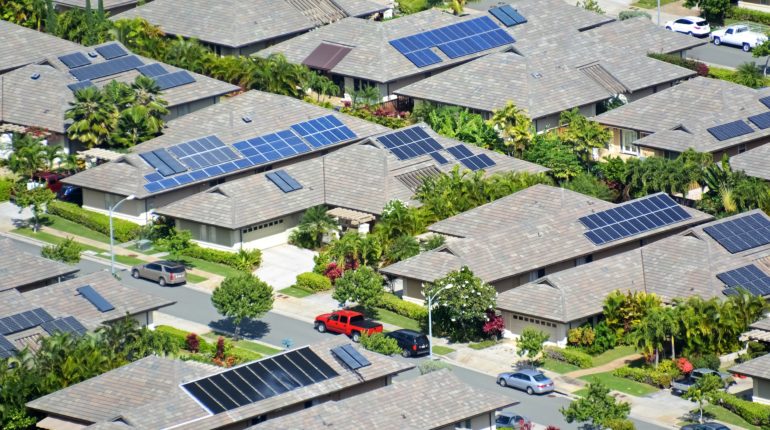Still, coal is the most dominant source of power worldwide. It supplies over one third of global electricity, with gas being the second most widely used energy source, supplying 24 percent.
You can probably guess that the majority of this electricity is being used to heat homes and businesses – a human necessity which unfortunately generates 30 percent of global carbon emissions annually.
But as prices for renewable energy have quickly declined, coal’s price has remained relatively stable – only dwindling by a meagre 2 percent in the last few decades. This is because the cost of coal lies in the value of the natural resource itself.
Unlike the continued advancement of green powered technologies, coal – nor the plants in which it is converted to energy – cannot be improved or made more efficient. The value of coal is stagnant, as it follows no technological learning curve.
So far, we know that energy harnessed via solar and wind power can be stored in batteries, redirected, and even shared between nations. For example, a major solar plant in Morocco is already redirecting some of its solar power to supply energy to Spain.
And when countries implement green policies and offer investments into the green sector – such as grants and rebates or tax credits for electric vehicles – technology is improved and the cost of renewable energy is driven down.
In fact, these types of green policies have seen electric vehicle prices fall 89 percent in the last few years. Bloomberg estimates that by 2025, electric cars will be sold at the same price point as combustion vehicles.

That said, lowering the cost of renewable energy doesn’t automatically lead to everyone automatically abandoning coal – and the speed and scale of green tech implementation is far from where it needs to be.
Just as many countries created new policies to kickstart local green technology, secondary policies still need to be implemented, such as creating a higher standard for energy sectors by offering subsidiaries to those who switch to renewables.
Governments can also incentivise businesses that install renewable technologies, store energy, and redirect the surplus back to the electrical grid. They’ll also need to create policy that ensures the correct infrastructure is in place to make this possible.
When our current reliance on coal is causing destruction to the planet and costing us unnecessary amounts of money, the answer seems obvious. It’s time to make a widespread switch to renewables.
If countries uphold the promises made at COP26, it’s likely we’ll see a lot of policies move in this direction over the next year. And why hesitate when it’s good for the planet and our pockets?























